Physicus
A DIY Observatory for Geomagnetic Field Variations measurement
Author
Dr. Wulfran Fortin
Physics teacher
Abstract
The design of the observatory is based on two web articles: a NASA classroom activity and a DIY magnetic observatory. In both cases, the principle is to track small variations of the East-West magnetic field component by measuring weak deviation of a magnetic needle. In order to perform such measurement, a laser beam and a spot tracking system must be developped. To damp oscillations of the needle, two systems where used before: an air damping system and a water damping system.
In the following page, I will describe a magnetic observatory where the damping system is based on Foucault currents, and the spot tracking system consists of a webcam and a python software.
The Observatory: general view
There are four blocks: a PC central unit, a laser pointer powered via USB, a webcam which tracks laser spot on a screen and a magnetic compas.
The observatory is running 24h/24h, inside my house and updates the present web site every 15 minutes.
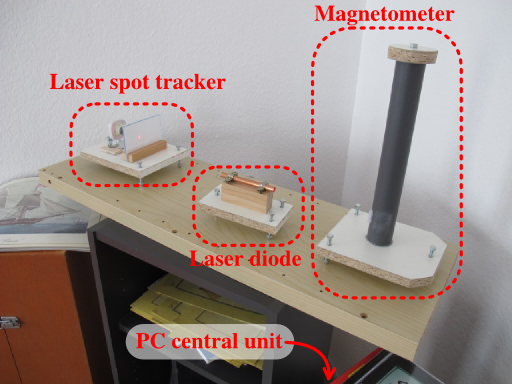
The levels can be adjusted by bolts.

The Laser Pointer
The laser diode comes from a lowcost chinesse level. That device was powered by two 1.5 volts batteries, so, I needed to limit diode current by adding resistors when diode was powered by 5 volts USB

The laser spot tracking device
This device consists of a screen and a webcam observing the spot through the screen.
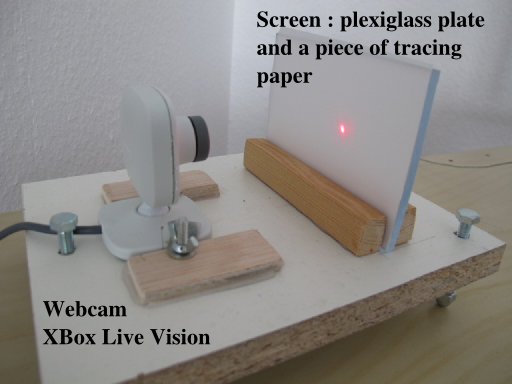
The magnetormeter tower
The magnetometer tower consists of a magnetic needle formed by two neodym magnets cliping a paperclip onwich two symetrics mirrors hare glued. The symetric conception allows to equilibrate the device.
The oscillations damping is performed by Foucaults currents induced by magnets in a piece of copper pipe. In less that ten seconds, all oscillation stops.
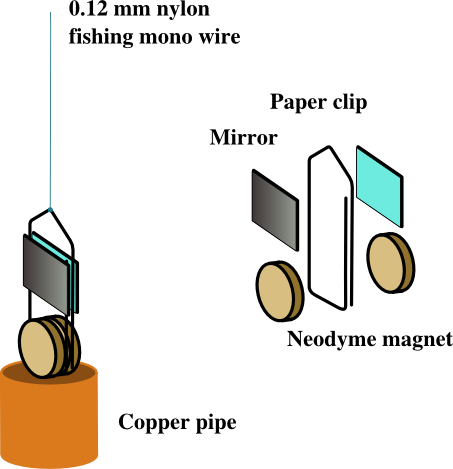
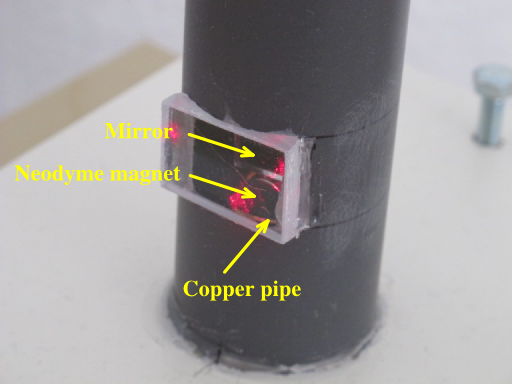
The paper clip hangs on a nylon wire of 0.12 mm (used for fishing), and it can be leveled by a device on the top of the tower.
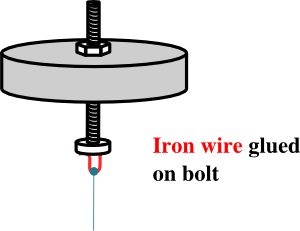
Software architecture
The software is writen in Python and uses severals API : OpenCV, SQLite , PyFTP and SciPy to ensure laser spot tracking, data saving, HTTP server updating and graphe edition.
The PC central unit is an old DELL Opiplex 740 Enhanced central Unit (80 euros in a cash converter). The OS is a Linux Mint 17 Mate Edition. A VNC server allows to drive the PC from an other machine.
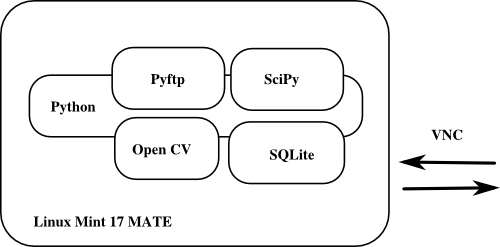
The camera tracks the position of the laser spot every 1/10th secondes.
Every 5 secondes, the mean position is computed and send to a SQLite database with a time stamp
Every 15 minutes, a graphe is generated and send to my personnal web pages..
Every 24h, a new graphics is created.
The tracking system is very robust: it can track spot night and day, it's not ligth environment sensitive.
Sowftware source code version 2.0.
Sowftware source code version 2.5.
Possibles Improvements
The French electric net is very efficient and stable. But sometimes, due to maintenances operations, there are small cut during night. So it would be fine to add an UPS.
The SQLite database can be remplaced by a MySQL database.
